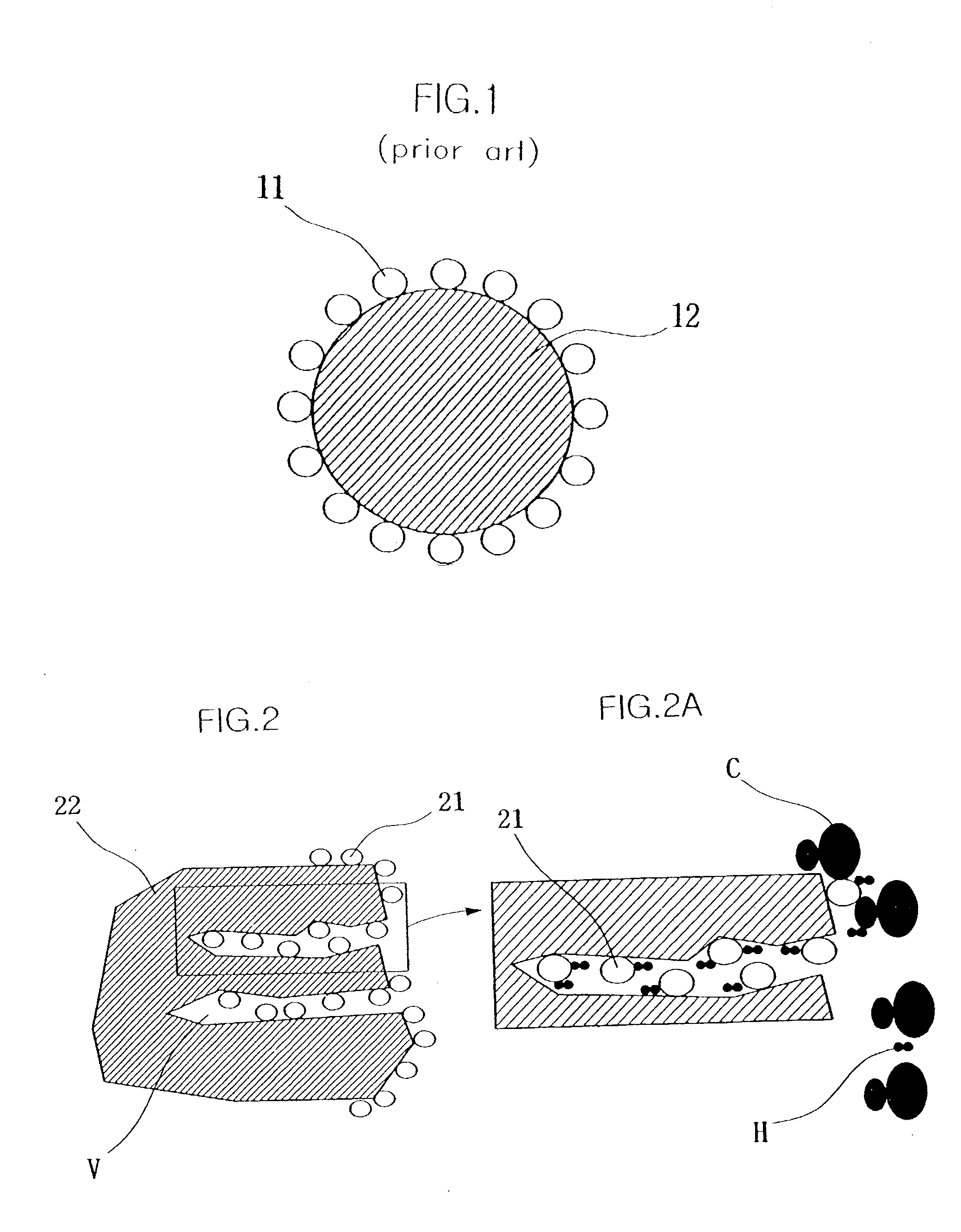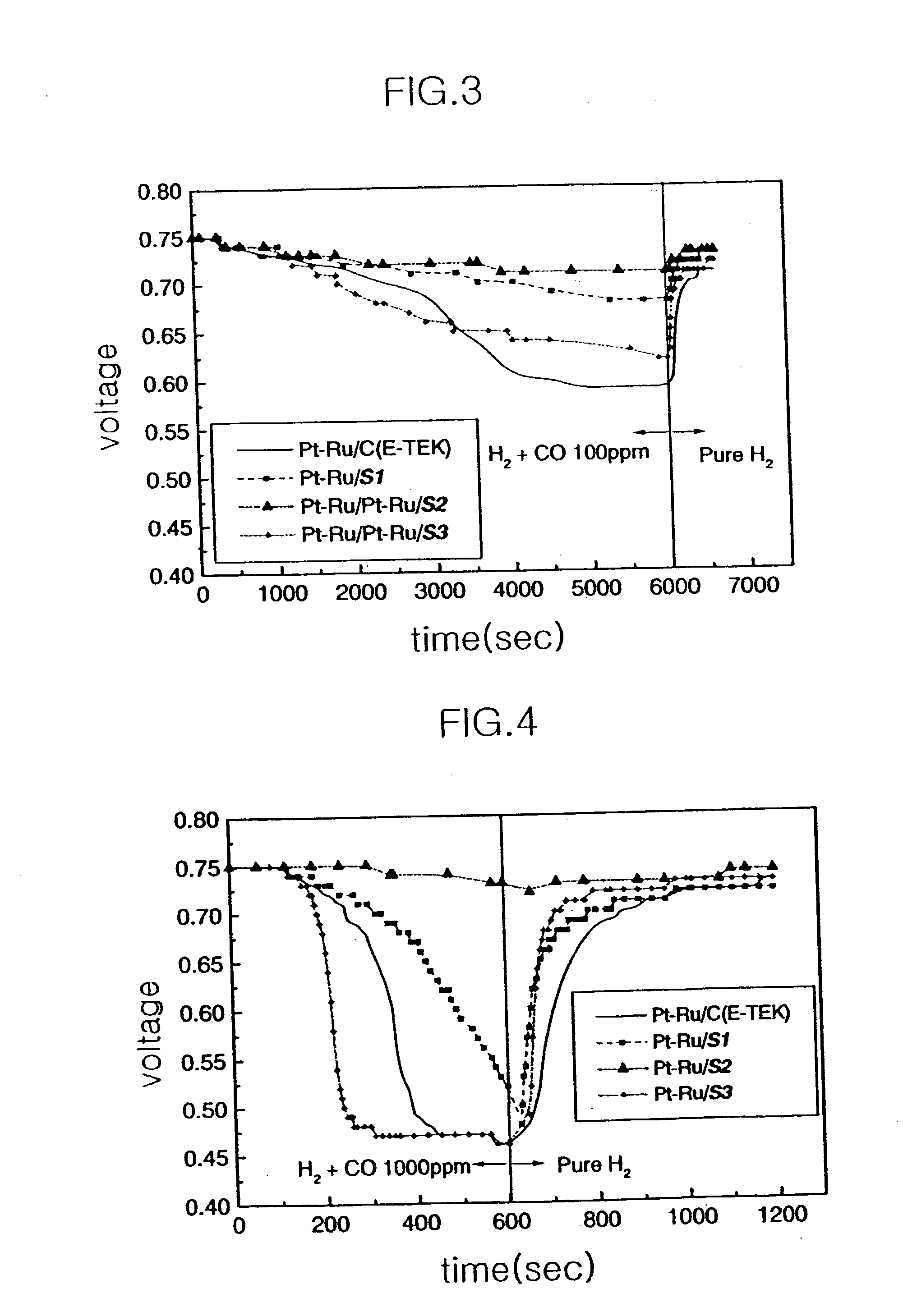Electrocatalyst for fuel cells using support body resistant to carbon monoxide poisoning
- Summary
- Abstract
- Description
- Claims
- Application Information
AI Technical Summary
Problems solved by technology
Method used
Image
Examples
Embodiment Construction
[0056] As a basic material of a porous support body useful in the present invention, commercially available activated carbon was used. Under nitrogen gas atmosphere, the activated carbon was heated to various temperatures, such as 600, 700, 800 and 900.degree. C., and kept for 2 hours.
[0057] As such, heating of the activated carbon to high temperatures resulted in enlargement of micropores formed in the activated carbon to mesopores, to prepare support bodies used in the present invention.
[0058] The support bodies heated to the above temperatures for a predetermined time period were cooled at room temperature. The cooled support bodies were washed with a solution of hydrochloric acid and washed several times with distilled water. The washed support bodies were dried in an oven at 120.degree. C. for 15 hours.
[0059] Physical properties of the porous support bodies thus prepared are shown in Table 1, below.
1TABLE 1 S.sub.BET S.sub.mi S.sub.me V.sub.mi V.sub.tot V.sub.me V.sub.me / [m.su...
PUM
| Property | Measurement | Unit |
|---|---|---|
| Percent by mass | aaaaa | aaaaa |
| Percent by mass | aaaaa | aaaaa |
| Percent by mass | aaaaa | aaaaa |
Abstract
Description
Claims
Application Information
 Login to View More
Login to View More - R&D
- Intellectual Property
- Life Sciences
- Materials
- Tech Scout
- Unparalleled Data Quality
- Higher Quality Content
- 60% Fewer Hallucinations
Browse by: Latest US Patents, China's latest patents, Technical Efficacy Thesaurus, Application Domain, Technology Topic, Popular Technical Reports.
© 2025 PatSnap. All rights reserved.Legal|Privacy policy|Modern Slavery Act Transparency Statement|Sitemap|About US| Contact US: help@patsnap.com


